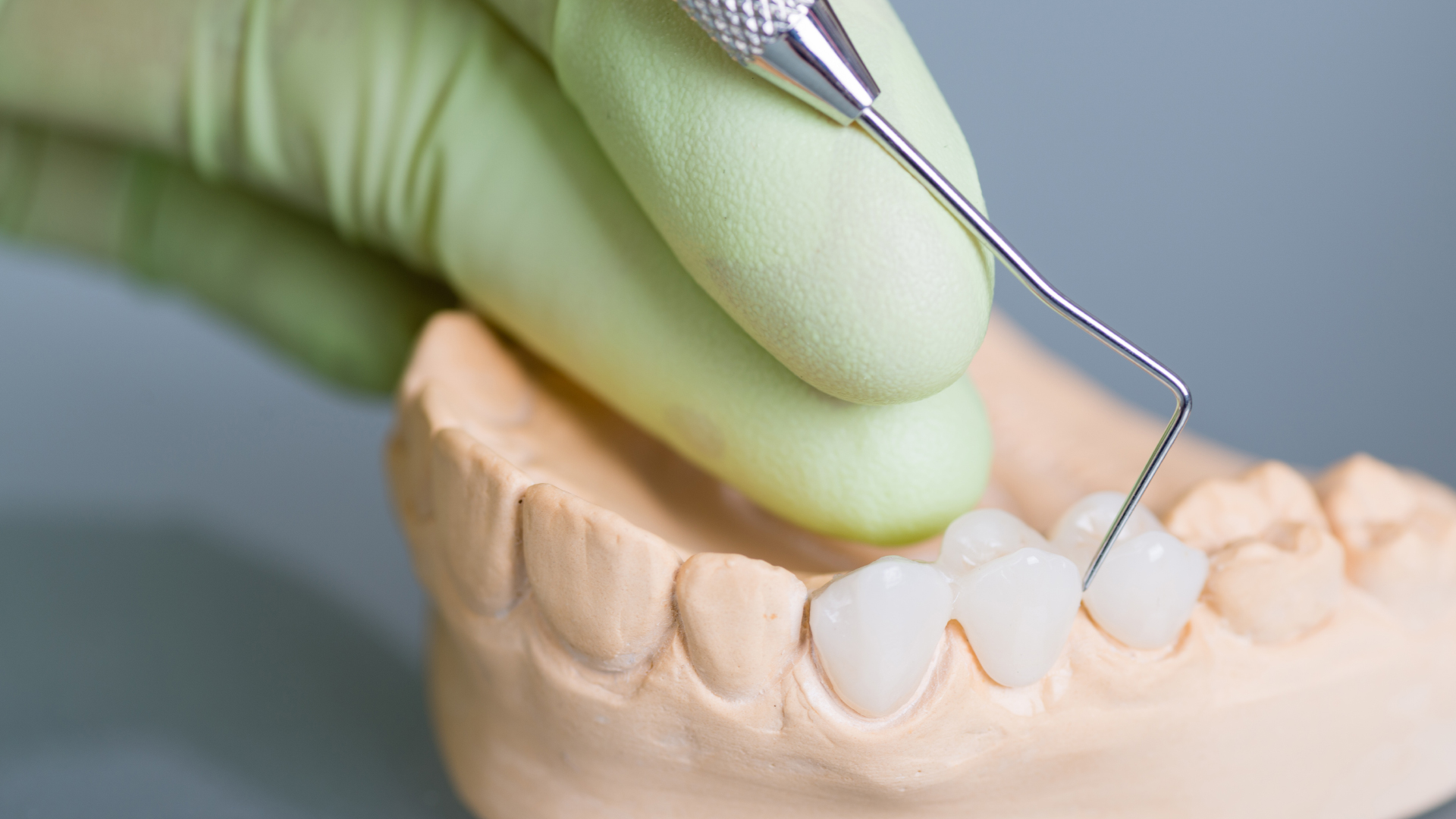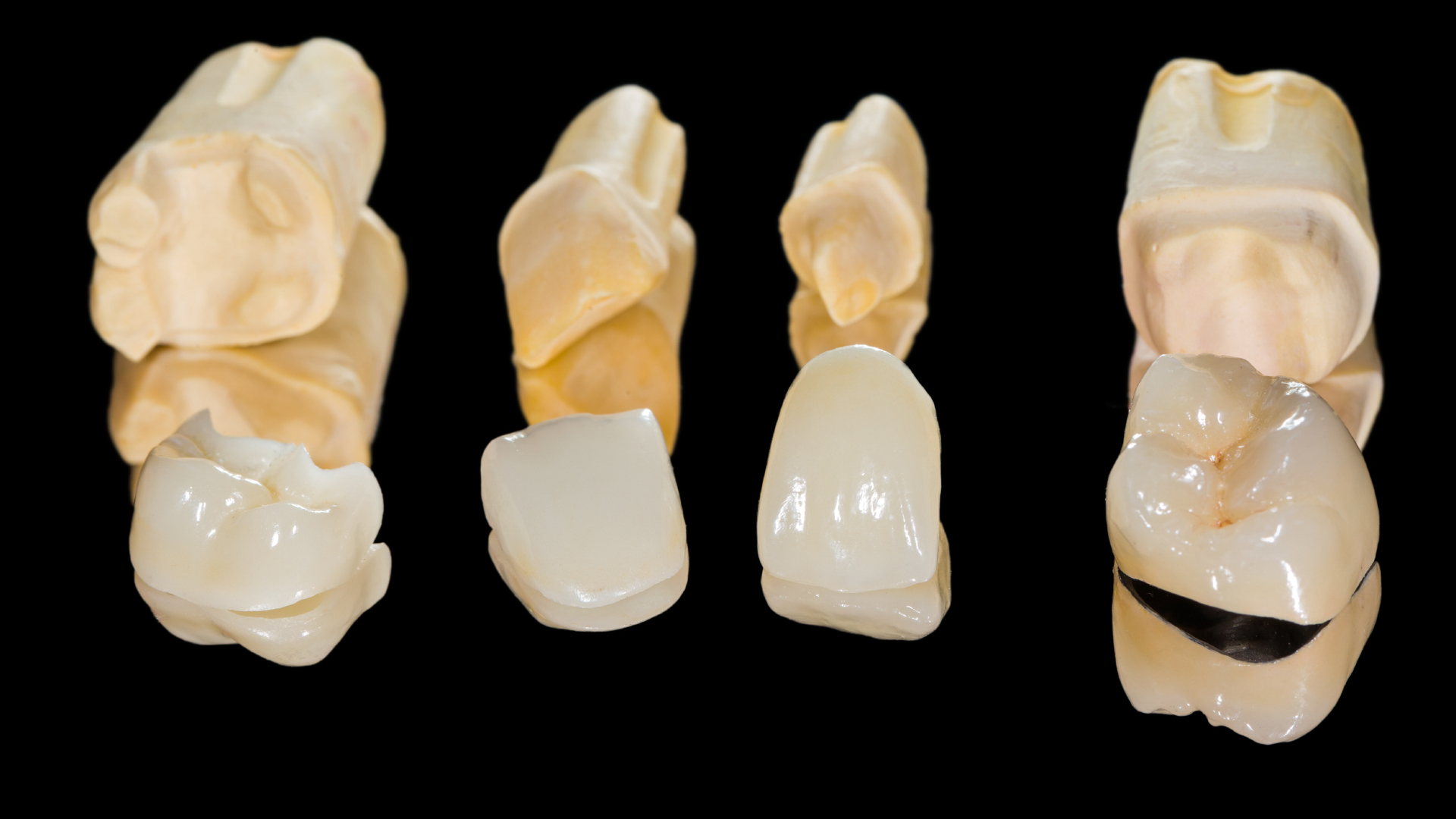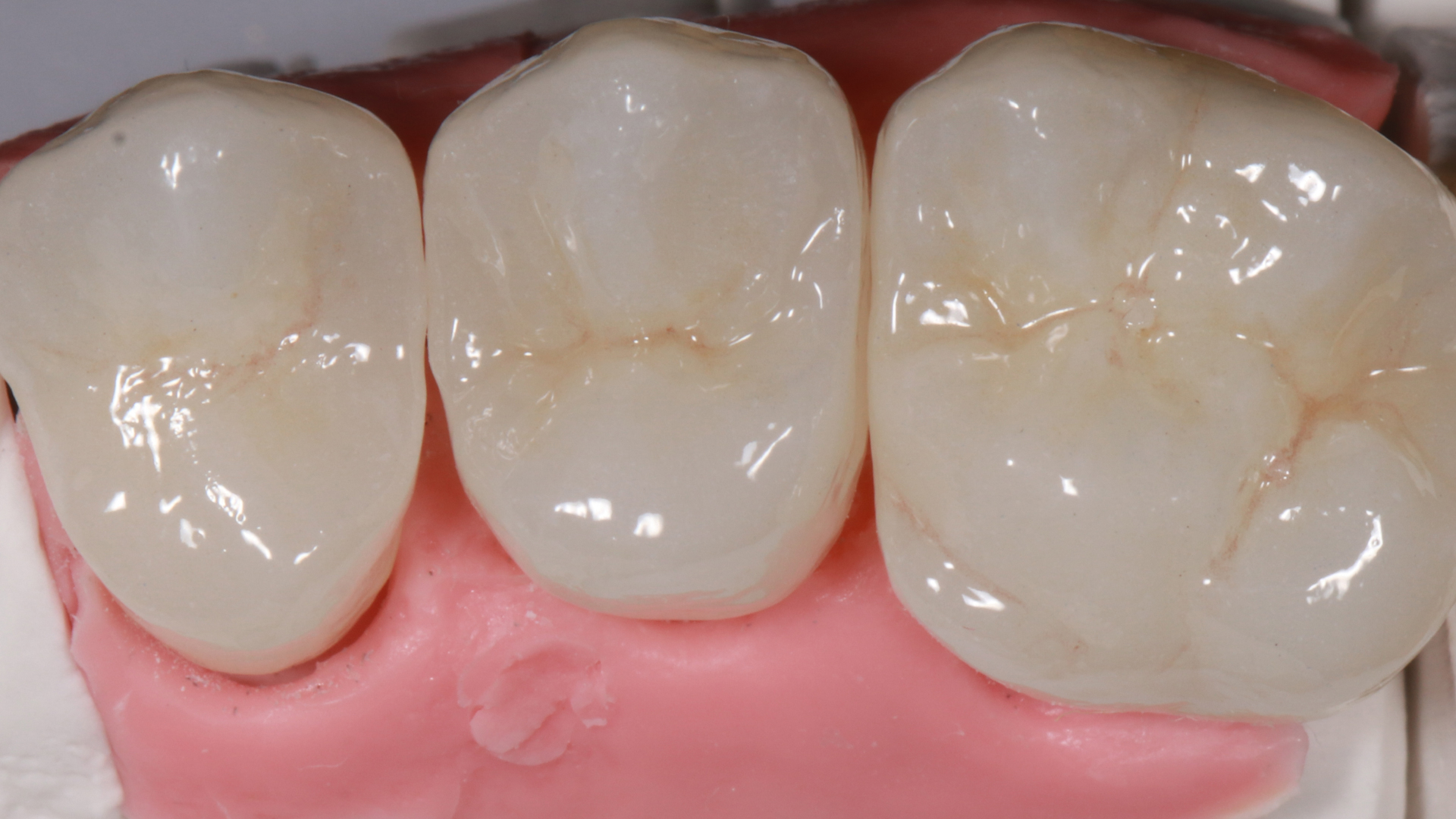Modern dentistry offers various solutions for restoring damaged or missing teeth. Among these options, inlays, onlays and dental implants stand out as advanced techniques providing long-lasting, aesthetic results. Each method has its own characteristics, advantages and limitations, suitable for different clinical situations (Angeletaki et al., 2016)[1].
Learn all you need to know about inlays and onlays, including their features, benefits and limitations.

What Are Inlays and Onlays?
Inlays and onlays are indirect dental restorations designed to repair teeth damaged by decay or trauma. Unlike conventional fillings moulded directly in the mouth, these restorations are custom-made in a laboratory before being fixed to the prepared tooth. They offer a middle-ground solution between a simple filling and a full dental crown, allowing for greater preservation of the natural tooth structure (Fron Chabouis et al., 2013)[2].
Inlay and Onlay: Understanding the Differences
Whilst similar in concept, inlays and onlays are distinguished by the area of the tooth they cover.
An inlay is designed to fit within the tooth cavity, without covering the cusps (tips) of the tooth. It’s generally used to repair damage in the centre of the tooth or between the cusps, and is ideally suited to medium to large cavities that are too extensive for a conventional filling but not severe enough to require a crown.

An onlay, conversely, covers one or more cusps of the tooth in addition to the central cavity. It’s used when the damage is more extensive and includes the cusps or edges of the tooth. Onlays are often chosen when a large part of the tooth structure is damaged, but enough healthy tooth remains to avoid a full crown (Mandal et al., 2022)[3].

Advantages of Inlays and Onlays
Inlays and onlays offer numerous benefits compared to other types of dental restoration. Their primary advantage is the preservation of as much natural tooth structure as possible.
Precision of fit is another significant benefit. As they’re custom-made in the laboratory, inlays and onlays offer an extremely precise fit. This precision allows for more effective sealing of the restoration, reducing the risk of secondary caries and bacterial infiltration.

The materials used, particularly ceramics, are highly durable and tend to last longer than traditional fillings, often 10 to 15 years or more with proper maintenance (Fron Chabouis et al., 2013)[2].
Aesthetically, ceramic or composite inlays and onlays can be perfectly matched to the natural colour of the tooth, offering a more visually pleasing result than metal fillings, especially for visible teeth when smiling.
Ease of cleaning is another strong point. The smooth surface and good fit of inlays and onlays facilitate maintaining good oral hygiene, helping to reduce the risk of recurrent caries and periodontal problems.

Limitations of Inlays and Onlays
Despite their many advantages, inlays and onlays have certain limitations that are important to consider. Cost is often the primary limiting factor. Inlays and onlays are generally more expensive than traditional fillings due to the custom manufacturing process and materials used. This price difference can be a barrier for some patients.
Treatment time is another consideration. The procedure typically requires at least two appointments: one to prepare the tooth and take an impression, and another to fit the restoration. This can be inconvenient for patients with time constraints.
The technique for fitting inlays and onlays is sensitive and requires great precision and technical expertise from the dentist. Poor adaptation can compromise the effectiveness of the restoration.

Some patients may experience temporary sensitivity after fitting, particularly to heat and cold. Although this sensitivity generally subsides over time, it may persist in some cases.
The materials used, whilst durable, may wear or fracture over time, particularly in cases of severe bruxism (teeth grinding). Composite restorations can discolour over time. Moreover, before an inlay or onlay can be fitted, sufficient healthy tooth structure must remain. In cases of severe tooth destruction, a full crown may be necessary.
Although rare, there is a risk of the inlay or onlay becoming detached, necessitating a new procedure. Once in place, it’s difficult to modify an inlay or onlay without replacing it completely, which can be problematic if adjustments are required later.
Impeccable hygiene is essential to avoid complications, as poor hygiene can lead to secondary caries at the edges of the restoration (Angeletaki et al., 2016)[1].
Dental Implants: An Optimal Solution
Dental implants represent a significant advancement in restorative dentistry. These artificial titanium roots are surgically inserted into the jawbone to replace one or more missing teeth.

The dental implant process involves several stages:
- The implant is surgically placed in the jawbone. This biocompatible titanium screw serves as an artificial root.
- After placement, the bone grows around the implant, anchoring it firmly in the jaw. This process, known as osseointegration, generally takes between 3 and 6 months.
- Once the implant is firmly integrated, a custom-made dental crown is attached to the implant, resembling and functioning like a natural tooth.
Dental Implants and Inlays/Onlays: Key Differences
Whilst inlays-onlays and dental implants are both restorative dental solutions, they differ fundamentally in their application and function.
Inlays-onlays restore part of an existing damaged tooth, while implants replace a missing tooth completely, including the root. The procedure for inlays-onlays is generally less invasive and time-consuming than that for implants, which involves surgery and a longer healing process.
In terms of longevity, inlays-onlays typically last 10 to 15 years with good maintenance, whereas implants can last a lifetime with proper care. Inlays-onlays preserve much of the natural tooth, whereas implants replace the entire tooth, including the root (Fron Chabouis et al., 2013)[2].
A significant advantage of implants is their ability to stimulate the jawbone, thus preventing bone resorption, which inlays-onlays cannot do.

The Advantages of Dental Implants
Optimum Comfort
Dental implants offer patients optimum comfort. They integrate seamlessly into the mouth, providing a sensation very similar to that of natural teeth. Patients often forget they have implants.
Unlike removable prostheses, implants are firmly anchored in the jaw, eliminating problems of slipping or clicking when chewing or speaking. They restore normal chewing ability, allowing you to eat all types of food without restriction.
Implants are not sensitive to heat or cold, eliminating the discomfort sometimes associated with sensitive natural teeth.

Exceptional Durability
The durability of dental implants is one of their greatest assets. With proper care, implants can last a lifetime, providing a permanent solution to the problem of missing teeth. Titanium implants are extremely strong and will not decay, withstanding the forces of chewing as well as natural teeth.
Unlike bridges, which require replacement, implants remain stable and do not depend on the health of adjacent teeth. Implants are also easy to maintain, as they can be brushed and cleaned just like natural teeth, requiring no special care beyond good, regular oral hygiene.
A Natural Aesthetic Result
Dental implants offer an exceptional aesthetic result. Implant-supported crowns are designed to perfectly resemble natural teeth, being custom-made to match the shade and shape of adjacent teeth.
Dental implants can restore a natural, confident smile, significantly improving the patient’s appearance and self-esteem.

Preservation of Alveolar Bone
A crucial advantage of dental implants is their ability to preserve the alveolar bone. When a tooth is lost, the bone that supported it begins to resorb in the absence of stimulation. By replacing the root of the tooth, dental implants stimulate the bone in the same way as a natural tooth, preserving its density and volume.
This bone preservation is essential for maintaining facial structure and preventing problems associated with bone loss, such as facial sagging or difficulty wearing conventional dentures. By maintaining healthy bone, implants contribute to the overall health of the mouth and adjacent teeth.
Whilst inlays and onlays offer excellent solutions for restoring partially damaged teeth, dental implants are the ideal solution for replacing missing teeth completely. They combine comfort, durability, natural aesthetics and preservation of bone health, making them a preferred option.

Turkey has established itself as a leading destination for dental care, offering high-quality treatments at competitive prices. With Body Expert, you benefit from access to state-of-the-art dental clinics and highly qualified practitioners, as well as comprehensive assistance in organising your stay.
Contact Body Expert today to discover how we can help you obtain the dental treatment you need, whilst enjoying a memorable stay in Turkey.
Sources
- [1] Angeletaki, F., Gkogkos, A., Papazoglou, E., & Kloukos, D. (2016). Direct versus indirect inlay/onlay composite restorations in posterior teeth. A systematic review and meta-analysis. Journal of Dentistry, 53, 12-21. https://doi.org/10.1016/j.jdent.2016.07.011
- [2] Fron Chabouis, H., Smail Faugeron, V., & Attal, J. P. (2013). Clinical efficacy of composite versus ceramic inlays and onlays: a systematic review. Dental Materials, 29(12), 1209-1218. https://doi.org/10.1016/j.dental.2013.09.009
- [3] Mandal, N. B., Kumari, A., Baldev, K. C., Sarangi, P., Chauhan, R., Rajesh, D., & Tiwari, H. D. (2022). A Clinical Evaluation of Onlay and Inlay in the Posterior Ceramic Restorations: An Original Study. Journal of Pharmacy & Bioallied Sciences, 14(Suppl 1), S310-S312. https://doi.org/10.4103/jpbs.jpbs_776_21
6225 vues
0 commentaires
0






Il n'y a pas de commentaires pour le moment.